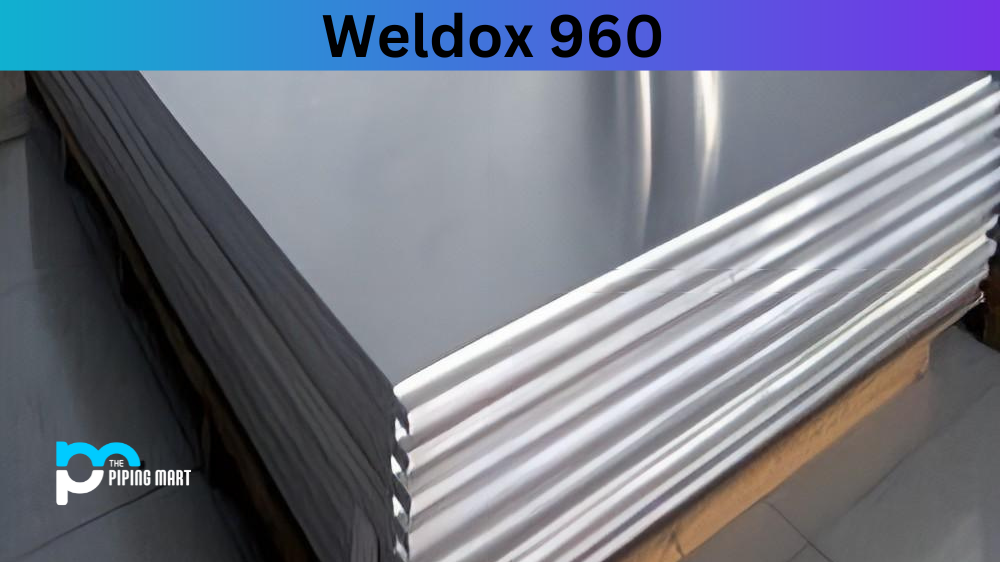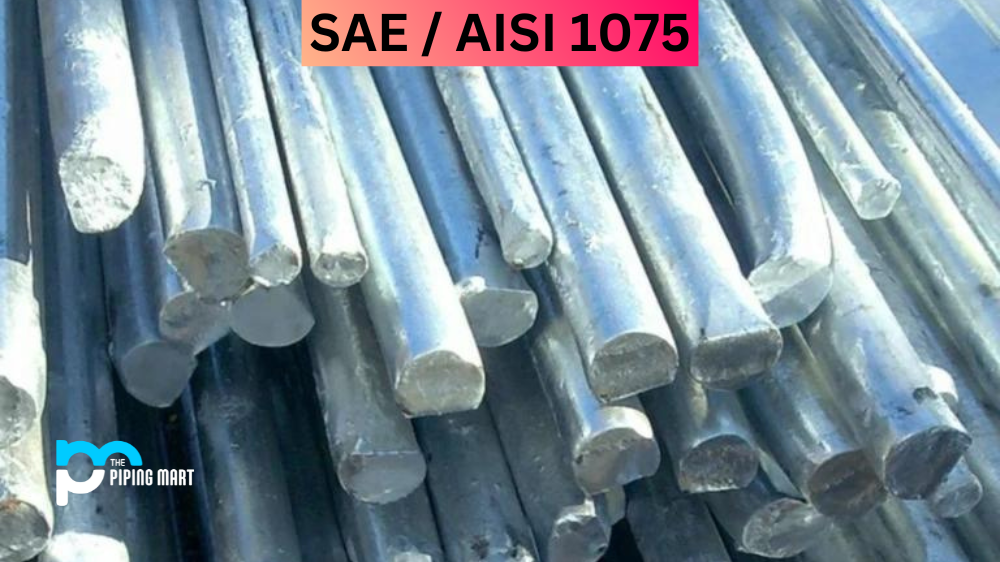AISI 5140 steel is a chromium-molybdenum alloy steel that has great mechanical properties. UNS G51400 is widely used in the production of components and parts due to its excellent strength, hardness, and wear resistance. The AISI 5140 Alloy Steel, also known as UNS G51400 or SAE 5140, is a type of low-alloy steel commonly used in manufacturing parts that require high strength and toughness. The composition of this steel includes elements such as chromium, molybdenum, and manganese, making it extremely resistant to wear and deformation. The SAE 5140 steel also exhibits excellent hardenability and machinability, making it a popular choice for applications such as gears, shafts, and axles. Its remarkable properties have made it one of the most versatile alloys used in the industry today. This blog post will outline the various uses, corrosion resistance, heat resistance, heat treatment, machining, and welding of 5140 Alloy Steel.
What Forms of AISI 5140 is Available at Piping Mart?
- Nut
- Bar
- Bolt
- Pipe
- Screw
- Tubing
- Valves
- Washers
- Flanges
- Fasteners
- Electrodes
- Stud Bolts
- Sheet Plates
- Pipe Fittings
- Forged Fitting
- Instrumentation Fittings
AISI 5140 Composition
| Element | Content (%) |
|---|---|
| Iron, Fe | 97.395-98.07 |
| Manganese, Mn | 0.700-0.900 |
| Chromium, Cr | 0.700-0.900 |
| Carbon, C | 0.380-0.430 |
| Silicon, Si | 0.150-0.300 |
| Sulfur, S | ≤ 0.0400 |
| Phosphorous, P | ≤ 0.0350 |
AISI 5140 Physical Properties
| Properties | Metric | Imperial |
|---|---|---|
| Density | 7.85 g/cm3 | 0.284 lb/in³ |
AISI 5140 Mechanical Properties
| Properties | Metric | Imperial |
|---|---|---|
| Tensile strength | 570 MPa | 82700 psi |
| Yield strength | 295 MPa | 42800 psi |
| Elastic modulus | 190-210 GPa | 27557-30458 ksi |
| Bulk modulus (typical for steel) | 140 GPa | 20300 ksi |
| Shear modulus (typical for steel) | 80 GPa | 11600 ksi |
| Poisson’s ratio | 0.27-0.30 | 0.27-0.30 |
| Izod Impact | 41.0 J | 30.2 ft.lb |
| Hardness, Brinell | 167 | 167 |
| Hardness, Knoop (converted from Brinell hardness) | 188 | 188 |
| Hardness, Rockwell B (converted from Brinell hardness) | 85 | 85 |
| Hardness, Vickers (converted from Brinell hardness) | 175 | 175 |
| Machinability (annealed and cold drawn, based on 100 machinability for AISI 1212 steel) | 65 | 65 |
AISI 5140 Thermal Properties
| Properties | Metric | Imperial |
|---|---|---|
| Thermal conductivity | 44.6 W/mK | 310 BTU in/hr.ft².°F |
| Thermal expansion co-efficient (@20-200°C/68-392°F) | 12.6 µm/m°C | 7 µin/in°F |
AISI 5140 Equivalent
| AFNOR 42 C 2 | AFNOR 42 C 4 | DIN 1.7035 | UNI 40 Cr 4 | UNI 41 Cr 4 KB | JIS SCr 4 H |
| B.S. 2 S 117 | B.S. 530 A 40 | B.S. 530 H 40 | B.S. 530 M 40 | ASTM A322 | ASTM A331 |
| ASTM A505 | ASTM A519 | SAE J404 | SAE J412 | SAE J770 |
AISI 5140 Uses
SAE / AISI 5140 steel is commonly used to make components for automobiles, agricultural machinery, and construction equipment. It can also be used for parts in industrial machines such as machine tools and textile machinery. This type of steel is often used for gears due to its superior wear resistance.
AISI 5140 Uses in Industries
Automotive Industry
AISI 5140, also known as chrome-molybdenum steel, is commonly used in the automotive industry for its high strength and toughness. It is often used to make gears, axles, and shafts due to its ability to withstand heavy loads and high stress.
Aerospace Industry
In the aerospace industry, AISI 5140 produces aircraft landing gear components. Its high strength and fatigue resistance make it suitable for this critical application where safety is paramount.
Oil and Gas Industry
The oil and gas industry utilizes AISI 5140 for various applications, such as drill collars, couplings, and valves. Its corrosion resistance makes it ideal for use in harsh environments where exposure to chemicals and saltwater can cause damage to other materials.
Construction Industry
AISI 5140 manufactures heavy-duty machinery such as cranes, excavators, and bulldozers in the construction industry. Its high tensile strength makes it suitable for these types of equipment subjected to heavy loads and constant use.
Manufacturing Industry
AISI 5140 is also widely used in the manufacturing industry for its versatility and durability. It can be found in various products such as tools, machine parts, and industrial equipment due to its ability to withstand wear and tear.
AISI 5140 Corrosion Resistance
SAE/AISI 5140 steel has good corrosion resistance when exposed to atmospheric conditions or in water with low oxygen content. However, it may corrode if exposed to higher levels of humidity or saltwater environments. For applications where high corrosion resistance is needed, it is recommended that protective coatings be applied to the surface of the material.
AISI 5140 Heat Resistance
SAE/AISI 5140 steel has excellent heat resistance when it is exposed to temperatures up to 1100°F (593°C). At higher temperatures, the material’s strength decreases somewhat but still remains strong enough for use in many applications. When exposed to temperatures above 1100°F (593°C), the material may become soft and lose its shape but will not melt until it reaches 2700°F (1482°C).
AISI 5140 Heat Treatment
SAE/AISI 5140 steel can be hardened by heating it up to 1000-1100°F (538-593°C) followed by quenching in oil or air cooling. This process increases the hardness and tensile strength of the material while maintaining its toughness. The material can also be tempered at lower temperatures after quenching for further strengthening.
AISI 5140 Machining
SAE/AISI 5140 steel can be machined using conventional methods such as turning, drilling, milling, sawing, grinding, etc. The material responds well with high-speed tools such as carbide-tipped cutting tools, which are capable of achieving a better finish than other tool materials such as HSS or cobalt steels.
AISI 5140 Welding
Welding on SAE/AISI 5140 steel requires preheating prior to welding in order to reduce stress concentrations caused by thermal contraction during cooling down after welding. It can be welded using any common welding method but must be done carefully because this type of steel has a tendency towards cracking during welding if not done properly. Post-weld cleaning should also be performed in order to remove any contaminants from the weld area which could cause corrosion or other problems later on down the line.
Conclusion:
To sum up, this blog post – SAE/AISI 5140 steel is an alloy that can be hardened through a heat treatment process and provides excellent corrosion and heat resistance when exposed to external conditions or water with low oxygen content, respectively. This material has many uses due to its superior mechanical properties, including making components for automobiles, agricultural machinery, construction equipment, industrial machines, gears etc. Proper machining techniques must be used when working with this material and preheating prior to welding. By following these steps, you will ensure that your projects are completed successfully.

Abhishek is a seasoned blogger and industry expert, sharing his insights and knowledge on various topics. With his research, Abhishek offers valuable insights and tips for professionals and enthusiasts. Follow him for expert advice on the latest trends and developments in the metal industry.




